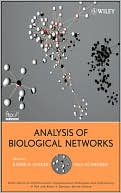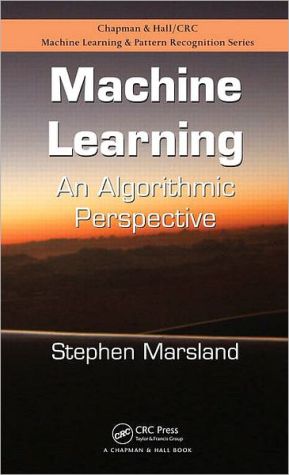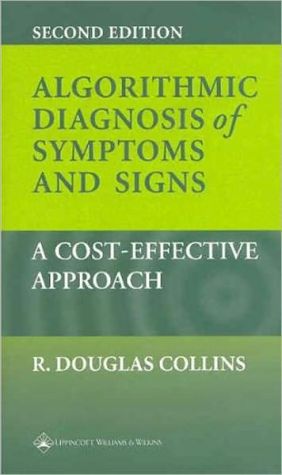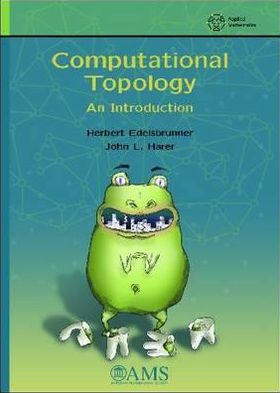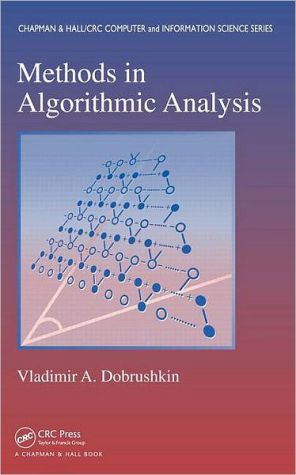Analysis of Biological Networks
Search in google:
An introduction to biological networks and methods for their analysis Analysis of Biological Networks is the first book of its kind to provide readers with a comprehensive introduction to the structural analysis of biological networks at the interface of biology and computer science. The book begins with a brief overview of biological networks and graph theory/graph algorithms and goes on to explore: global network properties, network centralities, network motifs, network clustering, Petri nets, signal transduction and gene regulation networks, protein interaction networks, metabolic networks, phylogenetic networks, ecological networks, and correlation networks. Analysis of Biological Networks is a self-contained introduction to this important research topic, assumes no expert knowledge in computer science or biology, and is accessible to professionals and students alike. Each chapter concludes with a summary of main points and with exercises for readers to test their understanding of the material presented. Additionally, an FTP site with links to author-provided data for the book is available for deeper study. This book is suitable as a resource for researchers in computer science, biology, bioinformatics, advanced biochemistry, and the life sciences, and also serves as an ideal reference text for graduate-level courses in bioinformatics and biological research.
Foreword xiiiPreface xvContributors xixIntroduction 1Networks in Biology Bjorn H. Junker 3Introduction 3Biology 101 4Biochemistry and Molecular Biology 4Cell Biology 6Ecology and Evolution 7Systems Biology 8Properties of Biological Networks 8Networks on a Microscopic Scale 9Networks on a Macroscopic Scale 11Other Biological Networks 11Summary 12Exercises 12References 12Graph Theory Falk Schreiber 15Introduction 15Basic Notation 16Sets 16Graphs 16Graph Attributes 19Special Graphs 19Undirected, Directed, Mixed, and Multigraphs 19Hypergraphs and Bipartite Graphs 20Trees 21Graph Representation 23Adjacency Matrix 23Adjacency List 23Graph Algorithms 24Running Times of Algorithms 24Traversal 25Summary 27Exercises 27References 28Network Analysis 29Global Network Properties Ralf Steuer Gorka Zamora Lopez 31Introduction 31Global Properties of Complex Networks 33Distance, Average Path Length, and Diameter 33Six Degrees of Separation: Concepts of a Small World 35The Degree Distribution 35Assortative Mixing and Degree Correlations 38The Clustering Coefficient 39The Matching Index 41Network Centralities 42Eigenvalues and Spectral Properties of Networks 43Models of Complex Networks 43The Erdos-Renyi Model 44The Watts-Strogatz Model 45The Barabasi-Albert Model 46Extensions of the BA Model 48Additional Properties of Complex Networks 48Structural Robustness and Attack Tolerance 49Modularity, Community Structures and Hierarchies 50Subgraphs and Motifs in Networks 51Statistical Testing of Network Properties 52Generating Networks and Null Models 53The Conceptualization of Cellular Networks 54Bipartite Graphs 55Correlation Networks 57Summary 57Exercises 58References 59Network Centralities Dirk Koschutzki 65Introduction 65Centrality Definition and Fundamental Properties 67Comparison of Centrality Values 68Disconnected Networks 68Degree and Shortest Path-Based Centralities 69Degree Centrality 69Eccentricity Centrality 71Closeness Centrality 72Shortest Path Betweenness Centrality 73Algorithms 74Example 76Feedback-Based Centralities 77Katz's Status Index 77Bonacich's Eigenvector Centrality 78PageRank 79Tools 80Summary 80Exercises 81References 81Network Motifs Henning Schwobbermeyer 85Introduction 85Definitions and Basic Concepts 86Definitions 86Modeling of Biological Networks 88Concepts of Motif Frequency 88Motif Statistics and Motif-Based Network Distance 89Determination of Statistical Significance of Network Motifs 89Randomization Algorithm for Generation of Null Model Networks 90Influence of the Null Model on Motif Significance 91Limitations of the Null Model on Motif Detection 91Measures of Motif Significance and for Network Comparison 91Complexity of Network Motif Detection 94Aspects Affecting the Complexity of Network Motif Detection 94Frequency Estimation by Motif Sampling 96Methods and Tools for Network Motif Analysis 96Pajek 96Mfinder 96MAVisto 97FANMOD 97Analyses and Applications of Network Motifs 97Network Motifs in Complex Networks 97Dynamic Properties of Network Motifs 98Higher Order Structures Formed by Network Motifs 102Network Comparison Based on Network Motifs 104Evolutionary Origin of Network Motifs 106Summary 106Exercises 108References 108Network Clustering Balabhaskar Balasundaram Sergiy Butenko 113Introduction 113Notations and Definitions 115Network Clustering Problem 118Clique-Based Clustering 119Minimum Clique Partitioning 120Min-Max k-Clustering 122Center-Based Clustering 125Clustering with Dominating Sets 126k-Center Clustering 129Conclusion 131Summary 133Exercises 133References 134Petri Nets Ina Koch Monika Heiner 139Introduction 139Qualitative Modeling 141The Model 141The Behavioral Properties 148Qualitative Analysis 152Structural Analysis 152Invariant Analysis 155MCT-Sets 162Dynamic Analysis of General Properties 164Dynamic Analysis of Special Properties 166Model Validation Criteria 168Quantitative Modeling and Analysis 169Tool Support 171Case Studies 172Summary 174Exercises 175References 177Biological Networks 181Signal Transduction and Gene Regulation Networks Anatolij P. Potapov 183Introduction 183Decisive Role of Regulatory Networks in the Evolution and Existence of Organisms 184Gene Regulatory Network as a System of Many Subnetworks 186Databases on Gene Regulation and Software Tools for Network Analysis 187Peculiarities of Signal Transduction Networks 188Topology of Signal Transduction Networks 190Topology of Transcription Networks 191Intercellular Molecular Regulatory Networks 198Summary 200Exercises 201References 202Protein Interaction Networks Frederik Bornke 207Introduction 207Detecting Protein Interactions 209The Yeast Two-Hybrid System 211Affinity Capture of Protein Complexes 216Computational Methods to Predict Protein Interactions 218Other Ways to Identify Protein Interactions 219Establishing Protein Interaction Networks 220Data Storage and Network Generation 220Benchmarking High-Throughput Interaction Data 222Analyzing Protein Interaction Networks 223Network Topology and Functional Implications 223Functional Modules in Protein Interaction Networks 223Evolution of Protein Interaction Networks 224Comparative Interactomics 225Summary 225Exercises 226References 227Metabolic Networks Marcio Rosa da Silva Jibin Sun Hongwu Ma Feng He An-Ping Zeng 233Introduction 233Visualization and Graph Representation 234Reconstruction of Genome-Scale Metabolic Networks 234Connectivity and Centrality in Metabolic Networks 239Modularity and Decomposition of Metabolic Networks 242Modularity Coefficient 244Modularity-Based Decomposition 245Elementary Flux Modes and Extreme Pathways 246Summary 249Exercises 249References 251Phylogenetic Networks Birgit Gemeinholzer 255Introduction 255Character Selection, Character Coding, and Matrices for Phylogenetic Reconstruction 257Tree Reconstruction Methodologies 260Phylogenetic Networks 264Galled Trees 266Statistical Parsimony 267Median Network 269Median-Joining Networks 270Pyramids 271Example of a Pyramidal Clustering Model 271Split Decomposition 274Summary 276Exercises 276References 277Ecological Networks Ursula Gaedke 283Introduction 283Binary Food Webs 289Introduction and Definitions 289Descriptors of the Network 289Operational Problems 291Aims and Results 291Conclusion 293Quantitative Trophic Food Webs 293Introduction, Definitions, and Database 293Multiple Commodities 295Descriptors of the Network and Information to be Gained 295Conclusion 298Ecological Information Networks 298Summary 300Exercises 301References 301Correlation Networks Dirk Steinhauser Leonard Krall Carsten Mussig Dirk Bussis Bjorn Usadel 305Introduction 305General Remarks 306Basic Notation 307Data, Unit, Variable, and Observation 307Sample, Profiles, and Replica Set 308Measures of Association 309Simple Correlation Measures 310Complex Correlation and Association Measures 311Probability, Confidence, and Power 313Matrices 314Construction and Analyses of Correlation Networks 314Data and Profiles 315Data Set and Matrix 316Correlation Matrix 318Network Matrix 318Correlation Network Analysis 319Interpretation and Validation 321Biological Use of Correlation Networks 321The Global Analysis Approach 321The Guide Gene Approach 322A Simple Coregulation Test: Photosynthesis 324A Complex Coregulation Test: Brassinosteroids 327Summary 328Exercises 329References 330Index 335
